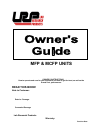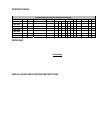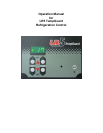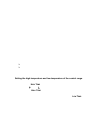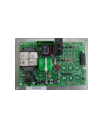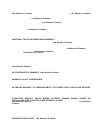7
If the High Alarm is being lowered and it runs into the High Temp, it will go no lower
than the (High Temp + 2).
If the Low Alarm is being raised and it runs into the Low Temp, it will go no higher
than the (Low Temp – 2).
Control Status and Error Conditions:
When the control is operating normally, the temperature detected by the sensor
assembly is displayed on the control panel. If the temperature gets too warm and
reaches the High Alarm setting, the display will flash alternatively between the actual
temperature and the message Hi. If the temperature gets too cold and reaches the
Low Alarm setting, the display will flash alternatively between the actual temperature
and the message Lo. If the sensor assembly is disconnected or gets damaged the
display will read Er.
Temperature Zones & Validation:
Each refrigerator or freezer will display its own characteristics in regard to the
temperature gradient throughout the inner chamber. The uniformity of the
temperature throughout the inner chamber can be influenced by many factors such
as location of the sensor, air flow patterns, mass of the sensor, location of shelves,
location of the product stored, quantity of the product stored, mass of the product
stored, number of doors, insulation and frequency of door openings/closings. Some
temperature variation in the refrigerator or freezer should be expected and is a
normal occurrence. The LR5 TempGuard control monitors and controls the
temperature at the location of its sensor assembly. At the location of the sensor the
temperature will be accurate to within 1 degree C.
Validation can be performed on the LR5 TempGuard control by testing at a known
temperature. Ice water has a known temperature of 0o C. To validate the control,
dip the sensor assembly into a bath of ice water made from distilled water. After
letting the temperature settle, the LR5 TempGuard will display a temperature of 0
degrees +/- 1 degree. This test validates the temperature accuracy of the sensor
assembly.



